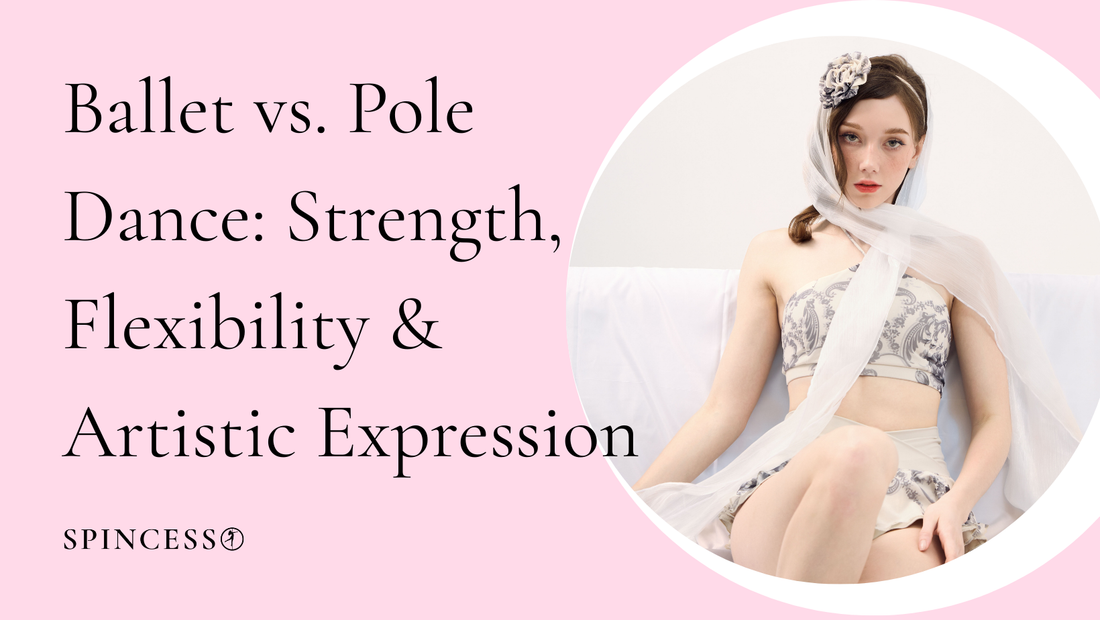Ballet and pole dance may seem worlds apart, but both art forms share a deep connection to strength, grace, and storytelling through movement. While ballet has centuries of tradition and discipline, pole dance emerges as a modern, empowering practice that blends athleticism with self-expression. Let’s explore how these two captivating forms compare and complement each other in terms of strength, flexibility, and artistic expression.
-
Strength: Power Beneath the Surface
-
Ballet’s Subtle Strength: Ballet dancers develop immense lower body and core strength to execute seemingly effortless leaps, turns, and balances.
-
Pole’s Dynamic Power: Pole dancers build upper body and grip strength to lift, hold, and control their bodies mid-air, defying gravity with every spin and trick.
-
Flexibility: Lines and Extensions
-
Ballet’s Classical Elegance: Flexibility in ballet is cultivated through years of stretching, leading to elongated lines and perfect turnout.
-
Pole’s Functional Range: Pole demands active flexibility, with dancers mastering splits, backbends, and dynamic kicks that seamlessly flow into transitions and tricks.
-
Artistic Expression: Telling Stories Through Movement
-
Ballet’s Timeless Narratives: Classical ballets like Swan Lake and Giselle tell intricate stories through precise choreography, with dancers portraying characters and emotions.
-
Pole’s Personal Expression: Pole dance offers a spectrum of styles — from lyrical flow to sensual exotic — giving dancers the freedom to tell deeply personal stories or simply revel in movement for movement’s sake.
-
Training & Technique: The Art of Discipline
-
Ballet’s Structured Training: Ballet dancers follow rigorous training regimens, with years of barre work, technique drills, and strict posture corrections.
-
Pole’s Playful Exploration: While technique is crucial, pole classes often encourage exploration and individuality, with dancers adapting moves to suit their unique strengths and styles.
-
Community & Empowerment
-
Ballet’s Tradition & Legacy: Ballet carries a legacy of discipline and excellence, with a focus on preserving historical works and refining technique.
-
Pole’s Inclusivity & Celebration: The pole community is known for its inclusivity and body positivity, welcoming dancers of all backgrounds and celebrating personal progress over perfection.
Conclusion: Ballet and pole dance, while distinct in their origins and techniques, share a profound dedication to movement as art. Whether you’re drawn to ballet’s refined elegance or pole’s uninhibited freedom, both forms offer incredible opportunities to build strength, flexibility, and emotional connection. And who says you have to choose? Many dancers blend elements of both, creating performances that are as breathtakingly powerful as they are beautifully expressive.
Why not try both and discover where your body and creativity feel most alive?

